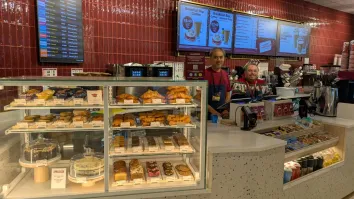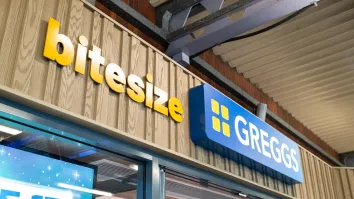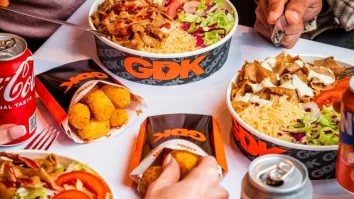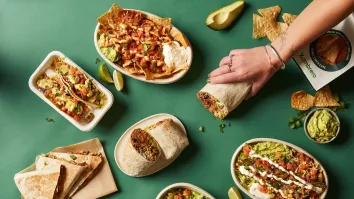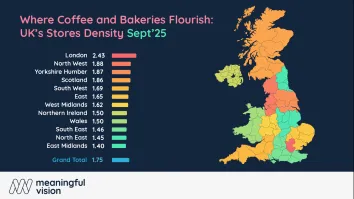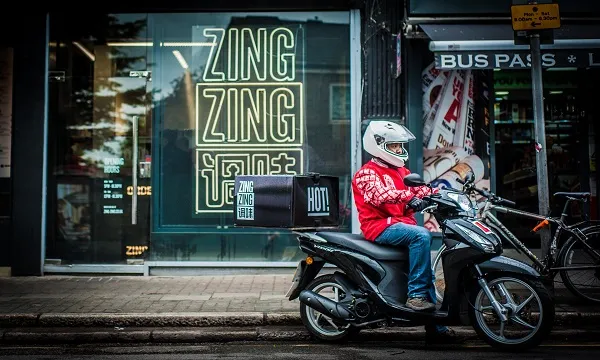
Zing Zing plans suburban London strategy to take bite out of £1.5 bn Chinese market
The brand looks to take on an industry that is hugely popular in the UK, with their principles of great quality food, fresh flavours and simplicity. Zing Zing focuses on customer service, packaging, recipe books, training, and quality. It revealed plans to expand the brand to a wider market by going a bit further out in little bit less populated areas.
QSR Media: What makes Zing Zing different?
We are striving to become the best Chinese takeout in the world, for us this means taking on an industry that is hugely popular in the UK- worth about 1.5 billion pounds per annum. But what the industry lacks is consistency. We’ve seen and tasted a lot of Chinese over the years, and undoubtedly lots of different brands serve great food, but they don’t do it consistently, for example, a dish can taste completely different day to day depending on the chef.
Several brands have dominated the pizza market, and we’re hoping to do the same with Chinese food. We make sure that our customer service is great and that if we do make a mistake, we learn to fix it quickly. We place an enormous focus on all those factors things that aren’t being prioritized elsewhere, customer service, packaging, recipe books, training, quality and so on.
We want to offer top quality food offered at a relatively low price, and deliver it super-fast. We refuse to believe that you must choose between value, speed and quality.
QSR Media: Who do you see as your target market and where will you target store openings?
From our current London stores, we know that our market is predominantly young professionals and families. They want convenience, speed and quality, some see takeaways as a really big treat which means that we cannot and will not let them down. Many people order regularly with us. These loyal customers are really engaged with the brand and love to keep up with what we are doing.
Our new Vegan & Vegetarian menu ZZ Green has allowed us the opportunity to target a new group which has been a real success. Blogger and customer feedback alike has shown us that we are doing something different, and doing it well.
There’s probably space for at least another three stores in London, and we’ll be looking west and south.
QSR Media: And then beyond this would you look to move outside central London?
Yes, we think Zing Zing is a great brand for suburban London. We’re keen to see how the brand works somewhere a little bit further out and a little bit less populated. We want to bring our great quality product to a wider market. We strongly believe that we can have a Zing Zing on every high street in the UK. Where we start is less relevant in some respects than where we finish.
QSR Media: How many stores do you think you can get to in 5 years? And how big do you think you can get ultimately?
We plan to have 30 stores by 2021. When we finished our crowd fund, Deliveroo was just launching, and Uber hadn’t gone into food – the world felt very different. We’ve had to adapt to our current business model, and it will change as further developments take place. We don’t know exactly what the future looks like, but we do know that we need to be flexible enough to change the existing model in line with what’s happening in the industry.
QSR Media: Can you give an example of where you’ve had to be more flexible in your business model to adapt to changing times?
We’ve worked hard to make our kitchens more efficient by launching ZZ Green. We believe that one way to adapt to this very competitive marketplace is to run multiple brands, and we’re fortunate to be able to do so from the same kitchen- essentially sharing efficiency gains and attracting a wider customer base. We pay lots of attention to the fact that we need to have a separate area in the kitchen to prepare the dishes and separate labels and sources.
When we opened our first store we competed with the small Chinese takeout down the road. Now we’re competing with 150 different restaurants, and pop-ups in Camden- you have to be smart and nimble to succeed.
QSR Media: How does menu innovation work and what products have you developed recently?
Our initial menu was put together based on the principles of great quality food, fresh flavours and simplicity. We don’t want to be having to hire chefs with 30 years of experience in cooking Chinese food in order to get the flavours right. We want to be hiring young people that can take a step up in the industry. We believe we can do that without sacrificing quality. We adapt the menu based on the trends that we’ve seen and based on customer feedback, we know that if something is not working we can take it off quickly or adapt it. If something’s selling really well, we can then focus on making the dish even better.
QSR Media: Have you had to increase your prices because of Brexit?
Brexit has affected the whole QSR market through the rising price of imports and a reduction in the labour pool. Whilst nothing has officially changed yet, we’re used to having lots of young people coming over from Europe and wanting jobs in our stores. We just don’t have that same level of interest at the moment.
Specifically for our business, we’ve made the conscious choice to not cheapen the ingredients we use, so we’ve passed on price rises to customers. Customers know that, and appreciate that. We don’t like the idea that if say the price of chicken price goes up, we’re go to find a different supplier.
QSR Media: What are your most popular menu items?
The bestseller is the glazed sesame chicken, along with our chunky shredded beef – both of which are made daily on site.
QSR Media: What about your vegan store? What’s proving most popular at ZZ Green?
The cauliflower dishes are selling really well, especially the firecracker dish. Our mushroom dishes are also really popular.
QSR Media: What other product innovations are in the pipeline that you can talk about?
We’re putting chicken katsu curry back on the menu – it used to be a great seller for us but we couldn’t get the consistency right. We think we’ve nailed it now. We also launched a brand called Bun & Bubble.
We’re actually looking to launch Bun & Bubble as a separate brand given the popularity of it so far. We’re looking for ways to keep our customers satisfied. We know more people are ordering food and fewer people are cooking these days. We want to create more offerings for customers.
QSR Media: So, how long has Bun & Bubble has been opened for?
Bun & Bubble has been operating in a couple of our sites since January. We’ve only recently started to talk about it as a brand owned by Zing Zing, even if it’s not an official part of the Zing Zing Group. It’s been really popular, especially over lunch times.
QSR Media: What are the current challenges and opportunities you see in the industry?
I think the biggest challenge in the industry is the increasing cost base across the board. We’re seeing the food cost going up, we want to be paying our staff living wage where we can – and we’ve started to do that. We know that in order to attract the best possible candidates, we need to pay more for them to do it. We’ve been relatively successful with that so far. I hope by next year we’re in the position where we can offer living wage across the board.


